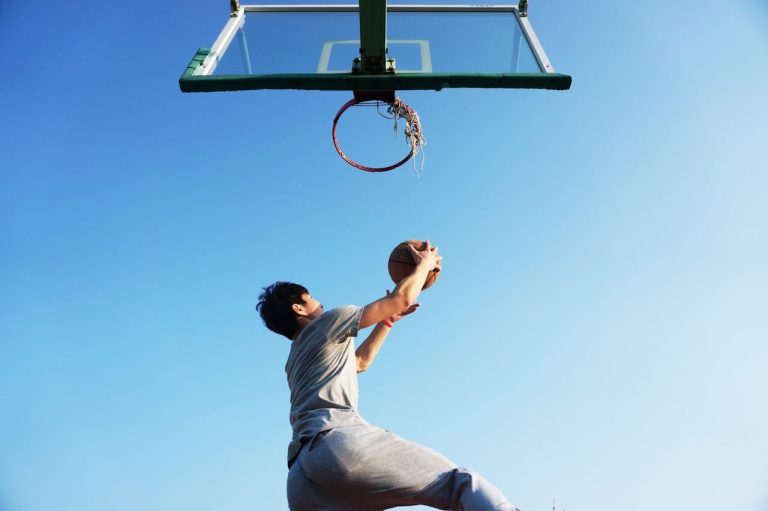Hello, IB students! As an experienced IB writer, I’m thrilled to share insights on the IB Sports, Exercise and Health Science IA topics. Trust me, tackling this project enthusiastically and strategically is crucial. So, I will give you some ideas for SL and HL levels.
What Is IB Sports, Exercise and Health Science Course?
As a seasoned IB writer with extensive experience in the International Baccalaureate framework, I’ve seen firsthand how the IB SEHS course shapes young minds. In my opinion, this course stands out for its multifaceted approach to learning, blending rigorous scientific theory with practical, real-world applications. Let me walk you through its core elements based on what I’ve learned and observed over the years:
- Anatomy and Physiology. Understanding the human body’s structures and functions is crucial. It includes learning about the musculoskeletal, respiratory, and cardiovascular systems.
- Energy Systems. Students explore how energy is produced and used during physical activity, an essential aspect of understanding performance and endurance.
- Movement Analysis. It involves studying the biomechanics of movement, a fascinating blend of physics and human biology.
- Sports Psychology. The focus is on the mental aspects of sports, such as motivation, stress, and anxiety, which are just as important as physical ability.
- Nutrition in Sports. IB students learn about diet, energy balance, and the role of different nutrients in an athlete’s performance.
- Sociocultural, Ethical, and Health-related Considerations. It broadens students’ perspectives, covering topics like doping, access to sports facilities, and global health trends related to physical activity.
I believe this course is an invaluable stepping stone for those considering a career in sports science, physiotherapy, or any health-related field. It lays a robust foundation for higher education and instills skills essential in these fields — analytical thinking, research capabilities, and applying theory in practical scenarios.
Understanding Sports, Exercise and Health Science IA
What exactly is the IB Sports, Exercise, and Health Science IA? Let me break it down for you. This component of the IB curriculum is a research project that allows you to explore a subject related to sports, exercise, or health science.
The course covers a wide range of topics for IA, from the anatomy and physiology of the human body to the sociocultural, psychological, and ethical aspects of sports and exercise. This breadth ensures a well-rounded understanding of the subject. Intriguing, right?
Now, the requirements differ between Standard Level (SL) and Higher Level (HL), each demanding its level of depth and complexity.
SL Students
Your IA might focus on a more concentrated area, perhaps investigating a specific exercise routine or a particular aspect of sports nutrition. The project typically involves a practical, experimental component, where you might conduct tests or surveys. The emphasis is on applying basic scientific principles and clearly understanding the chosen topic.
HL Students
Expectations are higher in terms of depth and breadth. Your project might explore broader themes, like the impact of sports on public health or advanced biomechanical analysis. The HL IA demands a more sophisticated approach to research, including a comprehensive review of existing literature and more complex experimental designs. Creativity in approach and critical thinking in analysis are essential at this level.
Sports, Exercise and Health Science IA Topics and Ideas
A good IA topic is interesting to you, relevant to the course, feasible in terms of research, and has the potential to demonstrate your skills in analysis and evaluation. Also, remember that avoiding typical errors in Internal Assessment leads to a more insightful, thoroughly researched, and superior project.

SL Sports, Exercise and Health Science IA Topics
SL covers essential topics, providing a broad overview of sports science, exercise physiology, and health issues:
- The Effectiveness of Pre-Game Warm-Up Routines. How do different warm-up routines affect performance in amateur soccer players?
- Hydration and Athletic Performance. What is the impact of hydration levels on endurance and strength in high school athletes?
- Sports Nutrition for Teen Athletes. How does a high-protein diet versus a high-carb diet affect the performance of teenage athletes?
- Psychological Impact of Team Sports. What are the effects of participating in team sports on the mental health of high school students?
- Sleep Quality and Athletic Performance. How does sleep duration impact student-athletes performance in track and field events?
- Yoga and Flexibility in Athletes. Can regular yoga practice significantly improve flexibility in teenage basketball players?
- Technology in Sports Training. How effective are wearable fitness trackers in improving training outcomes for high school swimmers?
- Impact of Music on Workout Intensity. Does listening to different genres of music alter the intensity of workouts in gym-goers?
- Caffeine Consumption and Athletic Performance. What effect does caffeine intake have on the sprint times of high school runners?
- The Role of Physical Activity in Stress Management. How does regular physical activity affect stress levels in IB students?
- Ankle Braces and Injury Prevention in Volleyball. Do ankle braces reduce the incidence of ankle injuries in school-level volleyball players?
- Aerobic vs. Anaerobic Exercise in Weight Management. Which has a greater impact on body composition in overweight adolescents: aerobic or anaerobic exercise?
- Hand-Eye Coordination in Racquet Sports. How does playing badminton affect hand-eye coordination in teenagers compared to not playing racquet sports?
- Sports and Self-Esteem in Adolescents. Does regular participation in organized sports positively influence self-esteem in adolescents?
- Effects of Altitude on Athletic Training. How does training at high altitudes affect the aerobic capacity of cross-country runners?
- Impact of Social Media on Young Athletes’ Performance. How does social media use influence high school athletes’ training habits and performance?
- Community Sports Programs and Youth Development. What role do community sports programs play in adolescents’ physical and social development?
- Home Exercise Routines vs. Gym Training. How do home exercise routines compare with gym training in improving physical fitness in teenagers?
- Mental Benefits of Regular Exercise. What are the psychological benefits of regular aerobic exercise for high school students?
- Post-Exercise Recovery Methods. How effective are various post-exercise recovery methods, like foam rolling or cold showers, in reducing muscle soreness?
- Physical Education and Academic Performance. Does participation in physical education classes correlate with improved academic performance in middle school students?
- Sports Injuries in Adolescent Athletes. What are adolescent athletes’ most common sports injuries, and how can they be prevented?
- Benefits of Team vs. Individual Sports. Do team sports offer different psychological benefits compared to individual sports for teenagers?
- Outdoor vs. Indoor Exercise. How does exercising outdoors compare to indoors in terms of mental well-being among youth?
- Women in Sports: Participation and Perceptions. What are women’s participation rates and perceptions in traditionally male-dominated sports in high school?
Feel free to discuss your ideas with your SEHS teacher or advisor. They can provide valuable feedback, suggest resources, and help refine your topic.
Buy IB IA with Full Confidentiality!
Grab your IB IA with full privacy guaranteed.
Our no-leak policy keeps your details 100% secure.

HL Sports, Exercise and Health Science IA Topics
HL includes all SL topics plus additional areas, offering a more comprehensive understanding of the field:
- Biomechanics of Different Running Styles. What are the biomechanical differences between forefoot and heel running techniques in long-distance runners?
- Ergogenic Aids in Elite Athletes. How do various ergogenic aids affect performance in elite cyclists?
- Genetics and Sports Performance. To what extent do genetic factors determine muscle fiber composition in elite powerlifters?
- Sports Psychology and Peak Performance. How does cognitive behavioral therapy influence performance anxiety in professional athletes?
- Advanced Nutrition Strategies for Endurance Athletes. How does a ketogenic diet, compared to a high-carb diet, affect endurance in marathon runners?
- Overtraining Syndrome in Professional Athletes. What are the physiological and psychological markers of overtraining syndrome in professional swimmers?
- The Impact of High-Intensity Interval Training (HIIT). How does HIIT compare to traditional endurance training in improving VO2 max in cyclists?
- Physiotherapy Techniques for ACL Rehabilitation. Which physiotherapy techniques most effectively speed up ACL recovery in football players?
- Wearable Technology and Performance Analytics. How does using advanced wearable technology influence training outcomes in competitive rowers?
- Sports-Related Concussion Management. What are the most effective strategies for managing concussions in rugby players?
- Cardiovascular Adaptations to Strength Training. What cardiovascular changes occur as a result of long-term strength training in bodybuilders?
- The Psychology of Team Dynamics. How do team dynamics affect individual performance in professional basketball teams?
- Environmental Factors in Outdoor Sports. How do varying environmental conditions affect performance in mountain biking?
- Hormonal Responses to Different Training Regimes. How do resistance training and aerobic training differentially affect hormonal responses in athletes?
- Ethics and Doping in Sports. What are the ethical implications and physiological effects of blood doping in long-distance runners?
- Exercise Physiology in Extreme Conditions. How do extreme environmental conditions affect the physiological responses of ultra-marathon runners?
- Advanced Sports Analytics for Performance Enhancement. How can advanced analytics be used to enhance performance in professional soccer teams?
- Gender Differences in Sports Injury Rehabilitation. Are there gender-specific differences in rehabilitation outcomes after a sports injury?
- Elite Athletes and Psychological Resilience. What role does psychological resilience play in the success of elite athletes?
- Nutritional Strategies for Peak Performance. What are the effects of different carbohydrate loading strategies on endurance performance in cyclists?
- Adaptive Sports Programs for Disabled Athletes. How do adaptive sports programs impact the physical and psychological well-being of athletes with disabilities?
- Stem Cell Therapy in Sports Medicine. What is stem cell therapy’s potential in treating sports injuries?
- Biomechanical Analysis of Sports Techniques. How do biomechanical variations in swimming strokes affect efficiency and speed?
- Ethical Considerations in Genetic Testing for Athletes. What are the ethical implications of genetic testing in predicting athletic performance?
- Performance Psychology in High-Pressure Competitions. How does cognitive training influence professional athletes’ performance under high-pressure conditions?
When choosing a topic, spend some time brainstorming and conducting preliminary research. It can help narrow your topic and ensure enough material to support your investigation.
Conclusion
In conclusion, the IB Sports, Exercise, and Health Science IA is a unique opportunity to showcase your skills and interests. Approach it enthusiastically and seriously, choose the best topic, and you’ll excel. Also, if you need help with Internal Assessment, just contact our IB writers.

Nick Radlinsky
Nick Radlinsky is a passionate educator, marketer, and management expert with over 15 years of experience in the education sector. After graduating from business school in 2016, Nick embarked on a journey to earn his PhD, fueled by his dedication to making education better for students everywhere. His extensive experience, beginning in 2008, has made him a trusted authority in the field.
Nick's groundbreaking article, published in Routledge's "Entrepreneurship in Central and Eastern Europe: Development through Internationalization," showcases his keen insights and commitment to improving the educational landscape. Guided by his motto, "Make education better," Nick's mission is to simplify students' lives and promote efficiency in learning. His innovative ideas and leadership have helped transform countless educational experiences, setting him apart as a true pioneer in his field.




